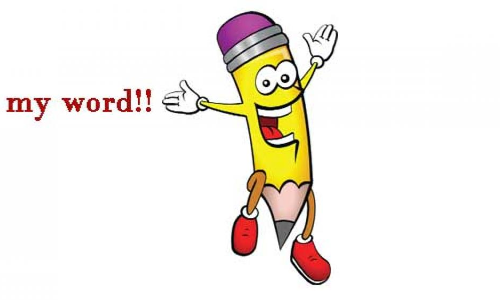Live
- Telangana CM Reviews Plans for First Anniversary of State Government
- Vijayawada: Kindness Day celebrated
- Rajamahendravaram: Students advised to set clear goals
- Digital locker facility now available at Namma Metro stations
- Swarna Vaijayanthi Mala presented to Tirumala god
- Physical fitness mandatory for cops: SP Jagadeesh
- Children’s Day celebrated at Ananthalakshmi School
- AHUDA chief Varun gets grand welcome
- Instil moral values in students
- Somishetty takes charge as KUDA chairman
Just In

Figure as a noun has many meanings, forms compound nouns (figure-head, figure dash, figure of merit).
Figure as a noun has many meanings, forms compound nouns (figure-head, figure dash, figure of merit).
Figure also functions as a verb (figures, figured, figuring) meaning appear or to be mentioned or to be referred: You figured in our discussions on the anatomy of soul.
Figure means a written symbol, sum of money, a diagram or an illustration, decorative pattern, human form in appearance
Figures is plural noun used in arithmetic: how do you fair with figures?
Figure of eight is a thing that resembles the number 8 in shape.
Figurine is a small ornamental statue especially of a person.
Figurative, abbreviated as fig, means of words used in an imaginative or a metaphorical way rather than literally.
She exploded with rage at his behaviour: here, figurative use of the verb ‘to explode’ is figurative, she was angry, madly angry at him.
Figuratively (adverb) means in a figurative sense, not literally, based on figures of speech. Literally means free from any metaphor or allegory or alliteration or any other figures of speech.
Figure of speech is a word or phrase used for vivid effect, for dramatic effect, and not to be taken or interpreted literally; a rhetorical device that can be a metaphor or simile used in order to express something effectively.
How many figures of speech (not, figure of speeches) are there?
Alliteration (repetition of the sounds): Shelly sells seashells.
Anaphora (repetition of same word): Mad world! Mad kings! Mad composition! - King John II by William Shakespeare
Assonance (repetition of vowel sounds): Or hear old Triton blow his wreathed horn (Wordsworth)– O.
Euphemism (a substitute word or phrase in the place of a harsh, blunt, or offensive term): He passed away (instead of he died).
Hyperbole (exaggeration for emphasis): They are older than dirt. Everybody knows. I’m starving. I’m dying..!
Irony (when there is a contrast between what is said and what is meant): How beautiful you are, when you know actually you are not.
Metaphors: falling in love, racking our brains, hitting a sales target, climbing the ladder of success, heart of stone, time is money, the world is a stage, he is a night owl, she is an ogre…
Onomatopoeia (word that sounds like what it is describing): buzz (insects), hiss (snake), moo (cow)…
Oxymoron (contradictory terms used together): Peacekeeping force, small crowd, free market...
Personification (human qualities to non-living things or ideas): wind howls, trees swayed, snow daces…
Simile (comparison between two unlike things using like or as): as slippery as an eel, as tall as Himalayas, like peas in a pod…

© 2024 Hyderabad Media House Limited/The Hans India. All rights reserved. Powered by hocalwire.com







